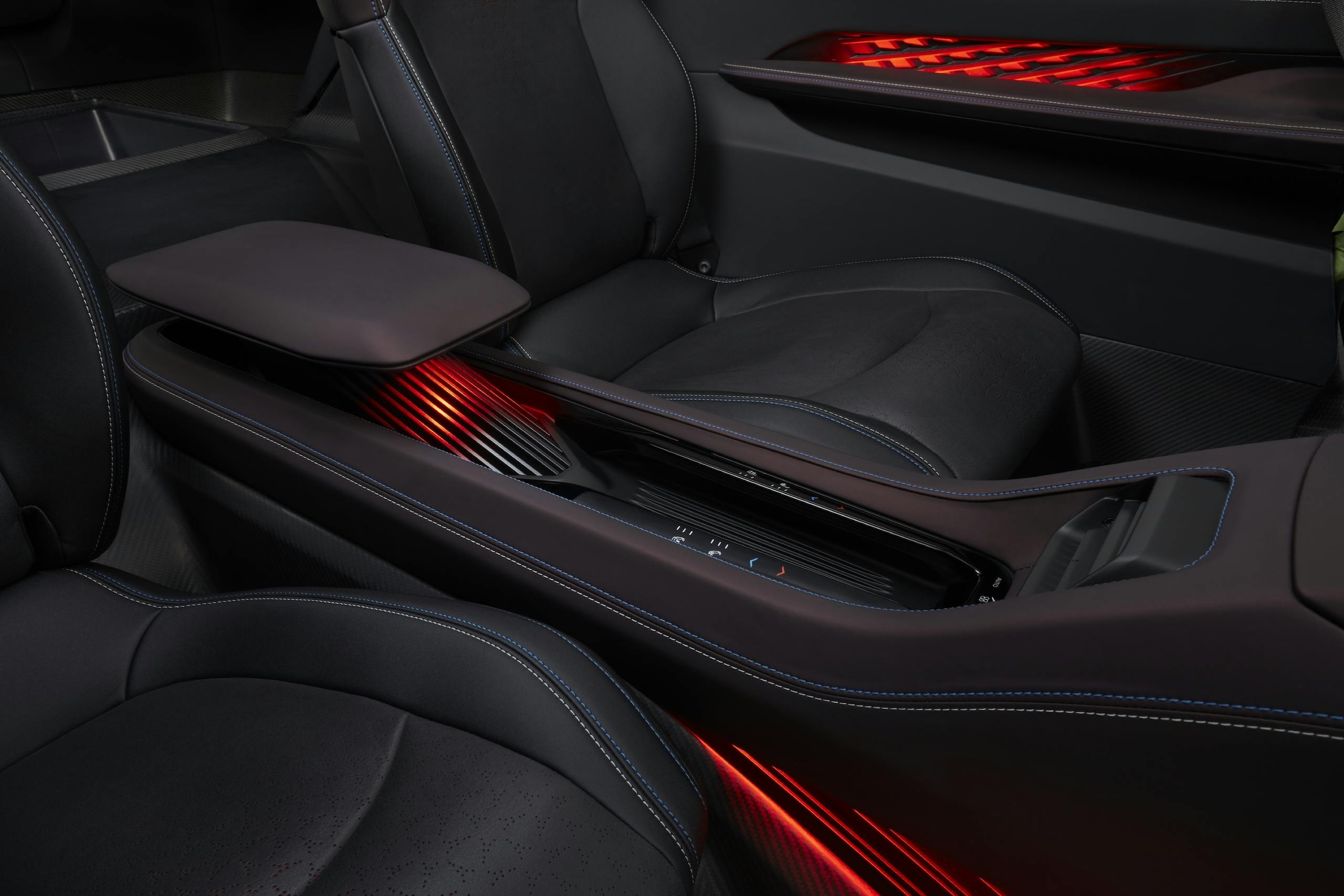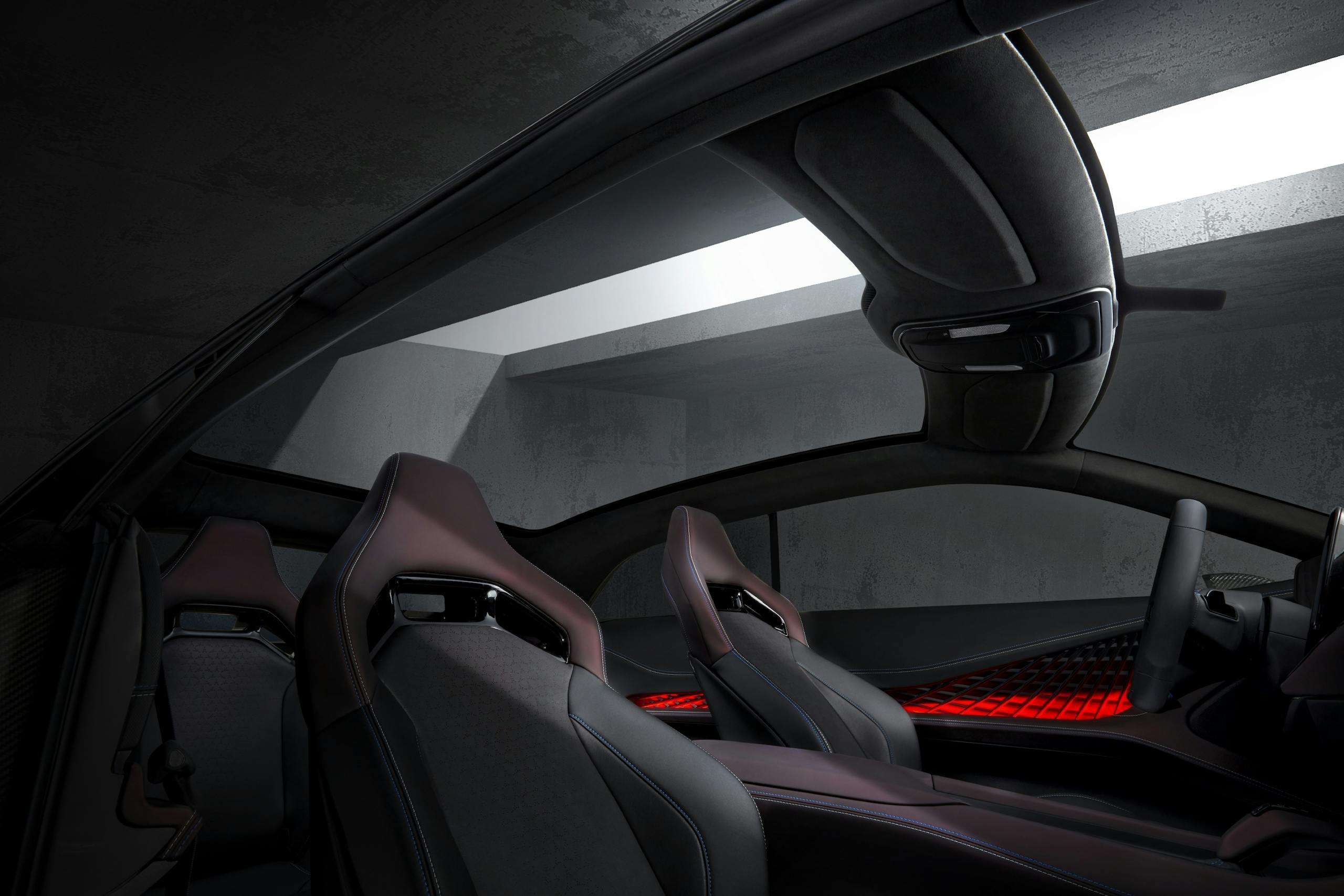Media | Articles
Charger Daytona SRT Concept: Striking, heritage-minded, and a bit gimmicky
Our first look at the shape of electrified muscle-cars-to-come is finally here. Dodge just rolled out its sinister new Charger Daytona SRT Concept, a pure EV performance coupe that Dodge says is faster than the current Hellcat in every meaningful metric. And compared to most suppository-shaped EVs on the road today, the Charger Daytona SRT looks the business. And with two more doors, it’s easy to imagine this concept is an accurate preview of the next Charger.
“Dodge is about muscle, attitude and performance,” said CEO Tim Kuniskis, “and the brand carries that chip on its shoulder and into the BEV segment through a concept loaded with patents, innovations, and performance features that embody the electrified muscle of tomorrow.”
Those features include an “eRupt” multi-speed electromechanical transmission, a simulated ICE exhaust note that is as loud as the Hellcat’s V-8, and an 800-volt electric propulsion system that Dodge is dubbing “Banshee.” The Charger Daytona concept features all-wheel drive, ostensibly for improved acceleration, handling, and all-weather capability. Exact power output for the Banshee architecture is still a secret, but knowing Dodge it’s probably overkill in the best possible sense. Center-lock wheels shroud six-piston Brembo front brakes.
Despite the electric architecture, Dodge is clearly keen to preserve in the Charger Daytona SRT, if not evolve, some experiential elements of the traditional ICE muscle car experience. The eRupt transmission, compared to most direct-drive/single-speed EVs, will deliver “distinctive shift points,” as well as the same PowerShot push-to-pass function announced for the plug-in hybrid Hornet R/T.
Noise is inextricably tied to muscle cars like the Charger and Challenger. A silent muscle car indeed would have been bizarre, and the solution may be equally so—126 dB of exhaust noise from an “industry-first” feature that Dodge is calling the Fratzonic Chambered Exhaust. Using sensor data and a computer that calculates everything from throttle position to vehicle speed and motor load, the Fratzonic system then generates a synthetic sound based on the “cadence of a Hemi V-8,” as one spokesperson told The Drive. It then goes into an amplifier and out of a more or less familiar exhaust system, which essentially acts in part as a kind of resonator.
Marketplace
Buy and sell classics with confidence
Is all this a bit gimmicky? That’d be a fair criticism, especially for those who would rather see car companies fully embrace electric technology without the anchor of the past. Dodge, however, has experienced extraordinary success in the last decade trading on its legacy of brash, loud-mouthed performance, which is an identity it’s not willing to leave behind.
Adaptations of classic cues can be found in the Charger Daytona SRT’s design, as well. The biggest innovation is the so-called “R-Wing”—a kind of nose-mounted aerodynamic wing with a pass-through that allows for airflow and increases downforce. Dodge says it has a patent pending on the design, which is an homage to the original Charger Daytona’s famous wing.
Fans of the classic Charger will also recognize the concept’s vertical grille slats in the lower front fascia, which are a callback to the popular ’68 model. Both the full-width LED front lightning signature and rear red light bar recall the vintage Charger’s squared-off design elements.
The three-pointed Fratzog logo—which appears on the R-Wing, wheels, and rear rectangular rear end—originally appeared on muscled Dodges from 1962 to 1976. Going forward, it looks like the illuminated badge will be an indicator of Dodge and/or SRT electric high-performance.

This Charger Daytona SRT concept appears to be a not-too-significant step from final production, especially with the next-generation eMuscle Challenger expected for 2024. The Daytona’s interior contains a fair bit of concept lighting frippery, but the shape of the dashboard, screens, center console, and seats all look ready for prime time. The steering wheel is a familiar square shape that evokes past SRT models like the Hellcat, and a traditional-looking PRNDL gear lever sticks out from between the seats. Behind it is a Lamborghini-style covered launch button (painted red, of course), and a row of what look like haptic-feedback buttons for parking sensors, lane-departure warning, and traction control.
With the purely gas-powered Charger and Challenger being retired after 2023, Dodge has made it clear that it sees a bright future with battery-fueled performance. This concept seems to walk the line between legacy muscle car cues and futuristic vision, though the hokey computer-generated exhaust is sure to make some eyes roll. If the Dodge performance cars coming actually deliver on this concept’s promise, however, they’ll make a strong case for bridging the gap to a brand-new definition of the muscle-car experience.
Check out the Hagerty Media homepage so you don’t miss a single story, or better yet, bookmark it.








































































I was at Indy in 1968 when the Turbine car was running. I was not impresed with its speed, because it sounded like a vacuum cleaner when it went by.
Kudos to Dodge for the styling and engineering!